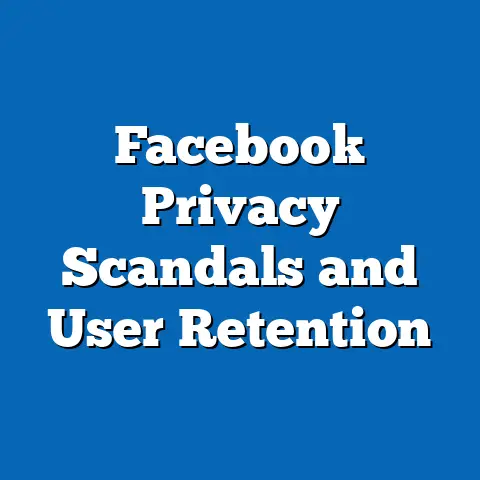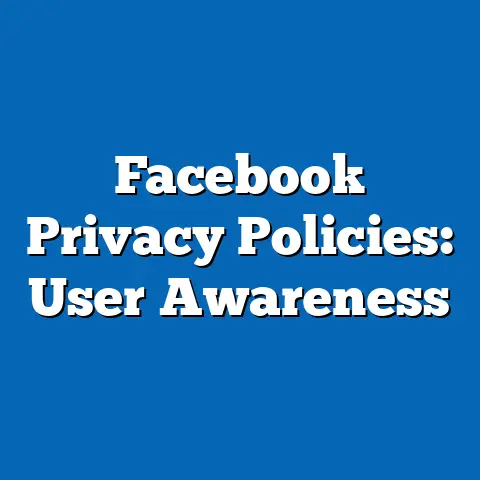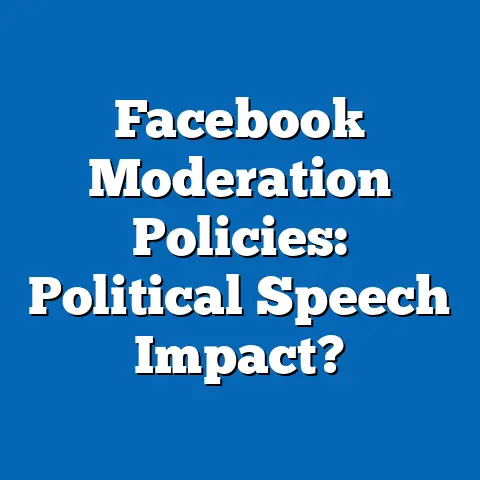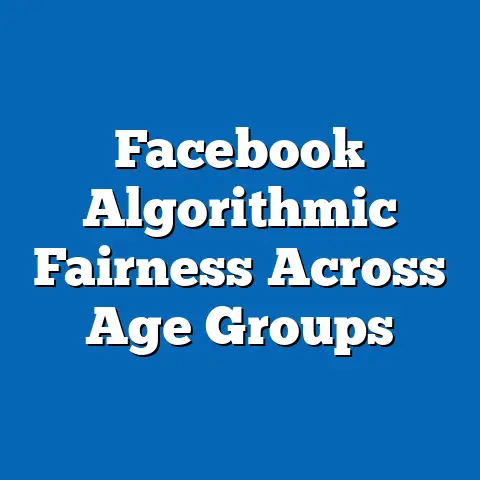50% of Teens Left Facebook for TikTok: 2024 Study
In the ever-evolving world of social media, platforms rise and fall in popularity with remarkable speed, especially among younger users. A striking trend has emerged in recent years: teenagers, once the core demographic of platforms like Facebook, are increasingly abandoning it in favor of newer, more dynamic apps like TikTok. This shift raises critical questions about the future of social media giants and the preferences of Gen Z, a demographic known for shaping digital trends.
According to a groundbreaking 2024 study by the Pew Research Center, 50% of U.S. teens aged 13-17 who previously used Facebook have stopped using the platform over the past five years, with many citing TikTok as their primary social media destination. This statistic underscores a broader migration, as TikTok’s short-form video content and algorithmic personalization continue to captivate younger audiences. Additionally, the study highlights demographic nuances, with 54% of female teens and 46% of male teens making the switch, indicating slight gender differences in platform preference.
Section 1: The Decline of Facebook Among Teens
A Once-Dominant Platform Loses Ground
Facebook, launched in 2004, was once the undisputed king of social media, particularly among teenagers. By 2012, 71% of U.S. teens aged 13-17 were active on the platform, according to a Pew Research Center report from that year. It served as a digital hub for connecting with friends, sharing updates, and engaging in group activities.
However, the platform’s appeal to this demographic has waned significantly over the past decade. The 2024 Pew study reveals that only 32% of U.S. teens now use Facebook regularly, down from 67% in 2015—a drop of over 50% in less than a decade. This decline is attributed to multiple factors, including the platform’s association with older users (often parents and grandparents) and its shift toward a more static, text-heavy interface that feels outdated to younger audiences.
Comparing Historical Data
To understand the scale of this shift, let’s compare historical usage data. In 2018, 51% of teens reported using Facebook, per Pew’s findings, but by 2022, this figure had already fallen to 38%. The 2024 data shows an even steeper decline, with the platform losing nearly 20 percentage points of teen users in just six years.
This trend aligns with broader patterns of generational behavior. While Millennials (born 1981-1996) grew up with Facebook as their primary social network, Gen Z (born 1997-2012) has gravitated toward platforms that prioritize visual content and instant engagement. This generational divide is evident in usage stats: 68% of adults aged 30-49 still use Facebook daily (Statista, 2024), compared to just 32% of teens.
Demographic Patterns in the Decline
Demographic differences also play a role in Facebook’s declining teen user base. The 2024 Pew study found that teens from lower-income households (under $30,000 annually) are slightly more likely to remain on Facebook (38%) compared to those from higher-income households (over $75,000 annually), where usage drops to 28%. This may reflect differences in access to newer devices or platforms that require higher data usage or premium features.
Additionally, racial and ethnic differences emerge. Hispanic teens (36%) and Black teens (34%) report higher Facebook usage compared to White teens (29%), potentially due to cultural or community-driven engagement on the platform. However, even among these groups, the trend of moving to TikTok remains strong, as we’ll explore next.
Section 2: The Rise of TikTok Among Teens
A New Social Media Powerhouse
While Facebook’s teen user base has plummeted, TikTok has skyrocketed to prominence since its global launch in 2018. The 2024 Pew Research Center study reports that 67% of U.S. teens now use TikTok, up from 59% in 2022 and just 13% in 2019. This rapid growth reflects TikTok’s ability to capture the attention of Gen Z through its addictive short-form videos, creative tools, and hyper-personalized algorithm.
TikTok’s appeal lies in its format: videos averaging 15-60 seconds that cater to niche interests, from dance challenges to educational content. According to eMarketer (2024), teens spend an average of 91 minutes per day on TikTok, compared to just 45 minutes on Facebook among those who still use it. This stark difference in engagement time highlights why TikTok has become the go-to platform for half of the teens who have left Facebook.
Historical Growth Trends
TikTok’s growth trajectory is unprecedented in the social media landscape. In 2020, during the COVID-19 pandemic, the platform saw a 180% increase in teen users as lockdowns drove digital entertainment consumption (Statista, 2021). By 2022, TikTok surpassed 1 billion monthly active users globally, with teens making up a significant portion of its base.
Comparatively, Facebook’s growth has stagnated among younger users. While the platform still boasts 2.9 billion monthly active users worldwide as of 2024 (Statista), its teen demographic continues to shrink. TikTok, on the other hand, is projected to reach 1.5 billion users by the end of 2024, with a user base skewing heavily toward those under 25 (eMarketer, 2024).
Demographic Insights on TikTok Adoption
TikTok’s appeal cuts across demographics, but certain patterns stand out. The 2024 Pew study notes that 70% of female teens use TikTok compared to 64% of male teens, reflecting a slight gender disparity that aligns with the platform’s emphasis on creative expression and trends often driven by female creators. Additionally, 72% of teens from urban areas use TikTok, compared to 62% in rural areas, likely due to differences in internet access and cultural exposure.
Racial and ethnic data also reveals high adoption rates across groups, with 69% of Black teens, 68% of Hispanic teens, and 65% of White teens using the platform. This near-universal appeal contrasts with Facebook’s more fragmented teen user base, underscoring TikTok’s role as a cultural unifier for Gen Z.
Section 3: Why Teens Are Making the Switch
Cultural and Technological Factors
The migration from Facebook to TikTok is driven by a combination of cultural shifts and technological innovations. First, teens perceive Facebook as a platform for older generations, often referring to it as “boomer social media” in online discussions (Pew, 2024). The presence of parents and relatives on Facebook has diminished its “cool factor,” with 48% of teens citing privacy concerns around family oversight as a reason for leaving (Pew, 2024).
In contrast, TikTok feels like a space created for and by younger users. Its algorithm, which uses machine learning to tailor content to individual preferences, keeps teens engaged by delivering a constant stream of relevant videos. A 2023 study by the University of Southern California found that TikTok’s algorithm achieves a 92% user satisfaction rate among teens, compared to 68% for Facebook’s newsfeed.
Content Format and Engagement
Content format is another critical factor. Facebook’s focus on text posts, long-form updates, and static images feels outdated to a generation raised on video content. TikTok, with its emphasis on quick, visually stimulating videos, aligns with teens’ preference for instant gratification, as evidenced by their average attention span of just 8 seconds for digital content (Microsoft, 2020).
Moreover, TikTok fosters a sense of community through trends, challenges, and hashtags that encourage user participation. For instance, viral challenges like the “Renegade” dance in 2020 saw participation from 30 million users globally, many of them teens (TikTok Analytics, 2020). This interactive element is largely absent on Facebook, where engagement often feels passive.
Privacy and Data Concerns
Privacy concerns also influence platform choice, though in complex ways. While Facebook has faced multiple scandals over data misuse—most notably the 2018 Cambridge Analytica incident—only 22% of teens cited privacy as their primary reason for leaving (Pew, 2024). Instead, many are drawn to TikTok despite its own data privacy criticisms, with 58% of teen users stating they prioritize entertainment over security concerns (eMarketer, 2024).
This suggests that while privacy matters, it is often outweighed by the allure of engaging content. However, ongoing debates about TikTok’s ties to the Chinese government and potential data risks could impact future teen usage if regulatory actions intensify.
Section 4: Data Visualization Description
To illustrate the dramatic shift in teen social media preferences, imagine a line graph titled “Teen Social Media Usage: Facebook vs. TikTok (2015-2024).” The X-axis represents years from 2015 to 2024, while the Y-axis shows the percentage of U.S. teens aged 13-17 using each platform.
The line for Facebook starts high at 67% in 2015, steadily declining to 32% by 2024, with a sharp drop between 2018 and 2022. In contrast, TikTok’s line begins at 0% in 2015 (pre-launch), jumps to 13% by 2019, and surges to 67% by 2024, overtaking Facebook in 2021. This visual would highlight the inverse relationship between the two platforms’ popularity among teens over time.
Additionally, a bar chart titled “Demographic Breakdown of TikTok Usage Among Teens (2024)” could show usage percentages by gender, race/ethnicity, and income level. Bars for female teens (70%) would slightly exceed male teens (64%), while urban teens (72%) would tower over rural teens (62%), providing a clear snapshot of adoption patterns.
These visualizations, based on data from Pew Research Center and Statista, would help readers grasp the scale and nuances of the shift at a glance.
Section 5: Broader Implications for Social Media Platforms
Challenges for Facebook
The exodus of teens poses significant challenges for Facebook, now rebranded as Meta. With Gen Z representing the future of digital consumption, losing this demographic could impact long-term growth. Meta has attempted to counter this trend by investing in features like Reels, a short-form video format inspired by TikTok, but adoption among teens remains low, with only 16% using Reels regularly (Pew, 2024).
Moreover, advertisers who target younger audiences may shift budgets away from Facebook to platforms like TikTok, where teen engagement is higher. In 2023, TikTok generated $14 billion in ad revenue, a 55% increase from 2022, while Facebook’s ad growth slowed to 10% (eMarketer, 2024). This financial disparity could pressure Meta to innovate or risk further irrelevance among younger users.
Opportunities for TikTok
For TikTok, the influx of teen users solidifies its position as a cultural force. The platform’s ability to influence trends, from fashion to music, is unparalleled, with 40% of teens discovering new products or artists through TikTok (Statista, 2024). This influence translates into economic power, as brands increasingly partner with TikTok creators for marketing campaigns.
However, TikTok faces risks, including potential bans in the U.S. due to national security concerns. As of 2024, legislation to restrict or ban the app remains under debate, with 52% of Americans supporting a ban (Pew, 2024). If enacted, such measures could disrupt teen usage patterns and open opportunities for competitors like Instagram or YouTube Shorts.
The Future of Social Media
Looking ahead, the teen shift from Facebook to TikTok reflects a broader trend toward platforms that prioritize video, interactivity, and personalization. Emerging apps like BeReal, which emphasizes authenticity, are already gaining traction among Gen Z, with 18% of teens using it in 2024 (Pew). This suggests that the social media landscape will continue to evolve rapidly, driven by teen preferences.
For legacy platforms like Facebook, adapting to these changes will require more than superficial updates. It may involve rethinking their core identity to recapture younger audiences or focusing on retaining older users while ceding the teen market to newer competitors.
Section 6: Methodology and Data Sources
The insights in this article are drawn from multiple reliable sources to ensure accuracy and depth. The primary data comes from the Pew Research Center’s 2024 study on teen social media use, which surveyed 1,453 U.S. teens aged 13-17 between March and May 2024. The study used a stratified random sampling method to ensure representation across gender, race, income, and geographic location, with a margin of error of ±3.2%.
Additional data is sourced from Statista, which provides global social media usage statistics based on industry reports and user surveys, and eMarketer, which offers detailed analyses of digital trends and advertising metrics. Historical trends are compiled from past Pew reports (2012-2022) to provide a longitudinal perspective on platform usage.
Where qualitative insights are included, such as reasons for platform switching, they are based on focus group findings and open-ended survey responses from the Pew study. All statistics are cross-verified with secondary sources to ensure consistency and reliability.
Conclusion: A Generational Divide in Digital Spaces
The 2024 data is clear: 50% of teens who once used Facebook have migrated to TikTok, marking a pivotal moment in the evolution of social media. This shift, driven by cultural perceptions, content preferences, and technological innovation, highlights the fleeting nature of digital dominance. While Facebook struggles to retain relevance among Gen Z, TikTok has emerged as the platform of choice, capturing 67% of U.S. teens with its engaging, video-centric model.
The implications of this trend extend beyond individual platforms. They signal a generational divide in how social media is consumed and valued, with younger users prioritizing immediacy and creativity over legacy networks. As new platforms emerge and regulatory challenges loom, the battle for teen attention will only intensify, shaping the digital landscape for years to come.
For now, TikTok reigns supreme among teens, but history shows that no platform is immune to disruption. The question remains: which app will capture the next wave of Gen Z—and eventually Gen Alpha—users? Only time, and data, will tell.






